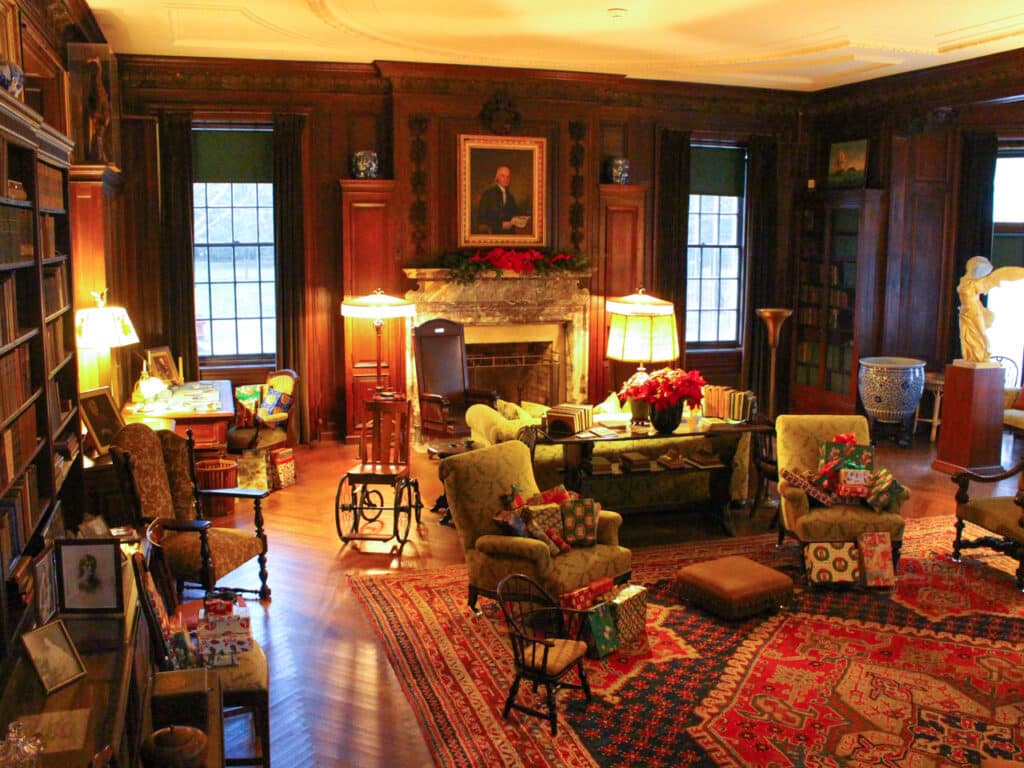
(Updated May 16, 2023) Located just three miles apart in Hyde Park, the historic homes of both Franklin D. and Eleanor Roosevelt offer the unique opportunity to glimpse into the lives of one of America’s original power couples.
The Home of Franklin D. Roosevelt National Historic Site is where FDR was born and grew up. Down the road, the Eleanor Roosevelt National Historic Site is where Eleanor retreated to time again, and where she lived permanently after her husband’s death in 1945.
FDR’s childhood home, called Springwood, was where he was most himself, while Eleanor’s home, named Val-Kill, was where she said she felt the most at ease.
The former president’s official library is located on the same property as Springwood. The library contains an enormous amount of information in the form of documents, posters, artifacts, collectibles, and videos of a president whose four terms spanned the mid-twentieth century, during global events that have shaped modern history.
Learning about these major public figures on a more intimate level prepared us to tour the couple’s long and winding history of public service that’s on display at the Franklin D. Roosevelt Presidential Library and Museum.
Visiting Springwood and Val-Kill makes a perfect day trip in the Hudson Valley. Both historic homes are part of the National Park Service. Read on for more about the history of the Roosevelts and how to visit these historic homes that belonged to one of the most well-known couples in American history.
The Marriage of Franklin and Eleanor
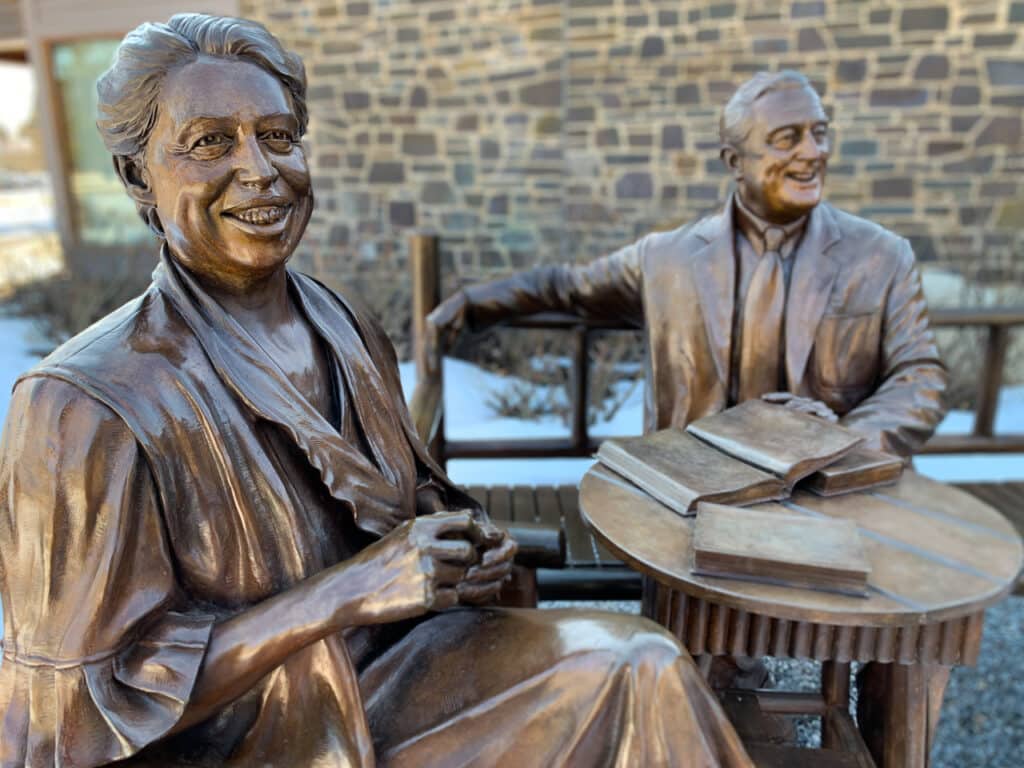
On March 17, 1905 Franklin and Eleanor Roosevelt were married in Manhattan. The date had been chosen to coincide with a visit to New York by Eleanor’s Uncle Theodore (Roosevelt), then president of the United States, who gave the bride away.
The ceremony that day commenced a 40-year marriage and when the Roosevelts died, 17 years apart, each left behind deeply defined identities. Their legacies have often blown them up to be larger than life and at the same time, reduced them to soundbites and life-affirming quotes written on refrigerator magnets.
Visiting their historical homes brings them to life in a more grounded, human way.
Home of Franklin D. Roosevelt National Historic Site
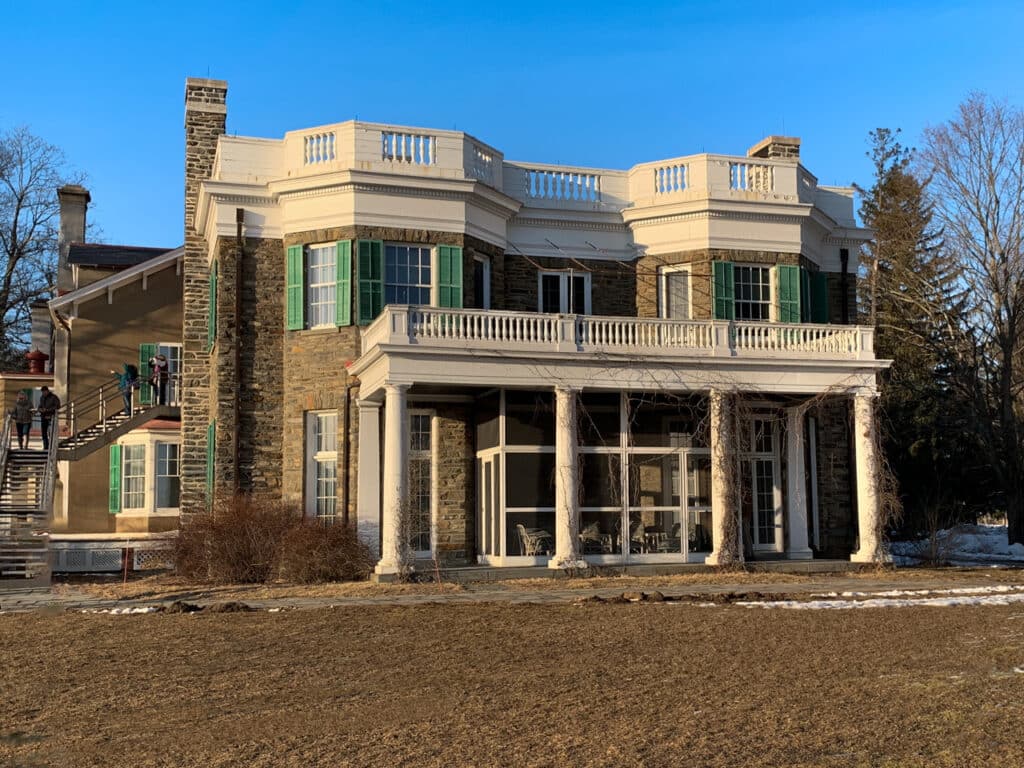
While it doesn’t quite match the decadence of other mansions in the Hudson Valley, FDR’s childhood home is still quite impressive in size. The main reason to visit though, is that the property tells the story of his entire life.
Springwood became part of the Roosevelt family in 1866, when Franklin’s father James bought it for $40,000. Franklin was born in an upstairs bedroom in 1882 and he grew up calling the banks of the Hudson River his playground. There, he rode horses through the woods with his father, sailed on the Hudson, and developed a deep connection to the land.
Touring the home will give visitors some insight into the family’s life. The bed where Franklin was born in 1882 still sits in an upstairs bedroom. Portraits and photos line the walls of the rooms and hallways, and sitting rooms are crowded with plush furniture.
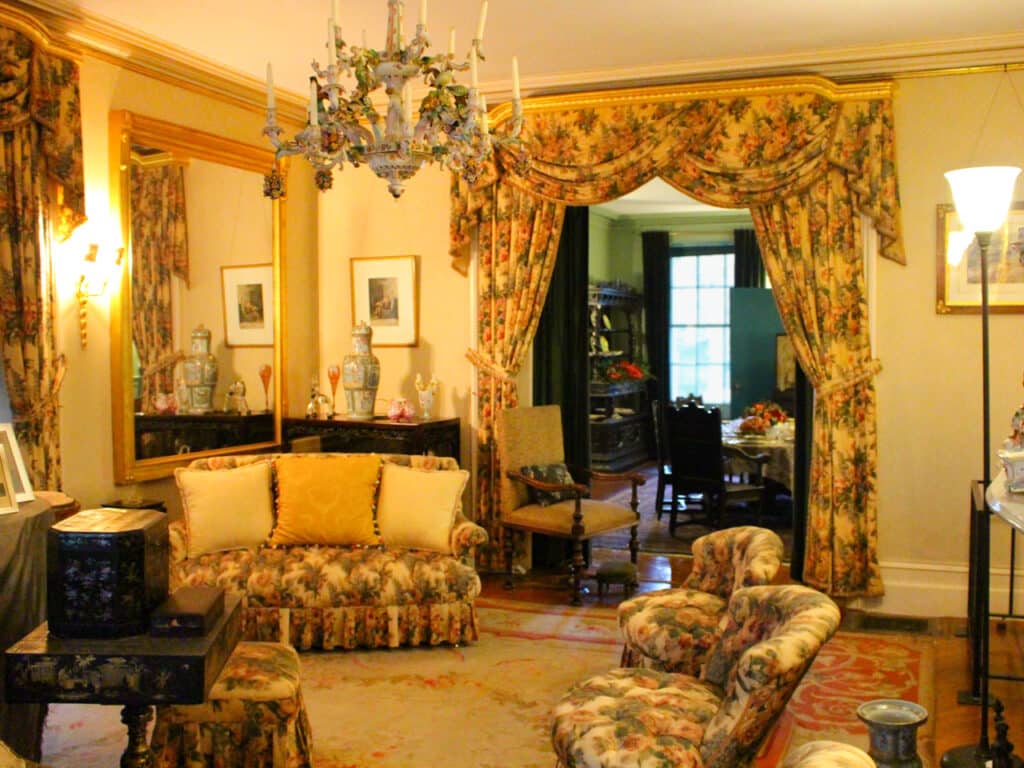
Once FDR contracted polio and lost the use of his legs, his mother wanted him out of the public eye, but Eleanor had other ideas. She knew that Franklin had to stay engaged in politics to feel useful, so it’s largely because of her influence that the home was made wheelchair accessible.
Franklin deeded the home to the National Park Service in 1943. It opened to the public on April 12, 1946—exactly one year after he died. The property also includes gardens and trails, Top Cottage, which FDR built as a retreat, the Rose Garden, where both FDR and Eleanor are buried, and the presidential library.
Franklin D. Roosevelt Presidential Library and Museum
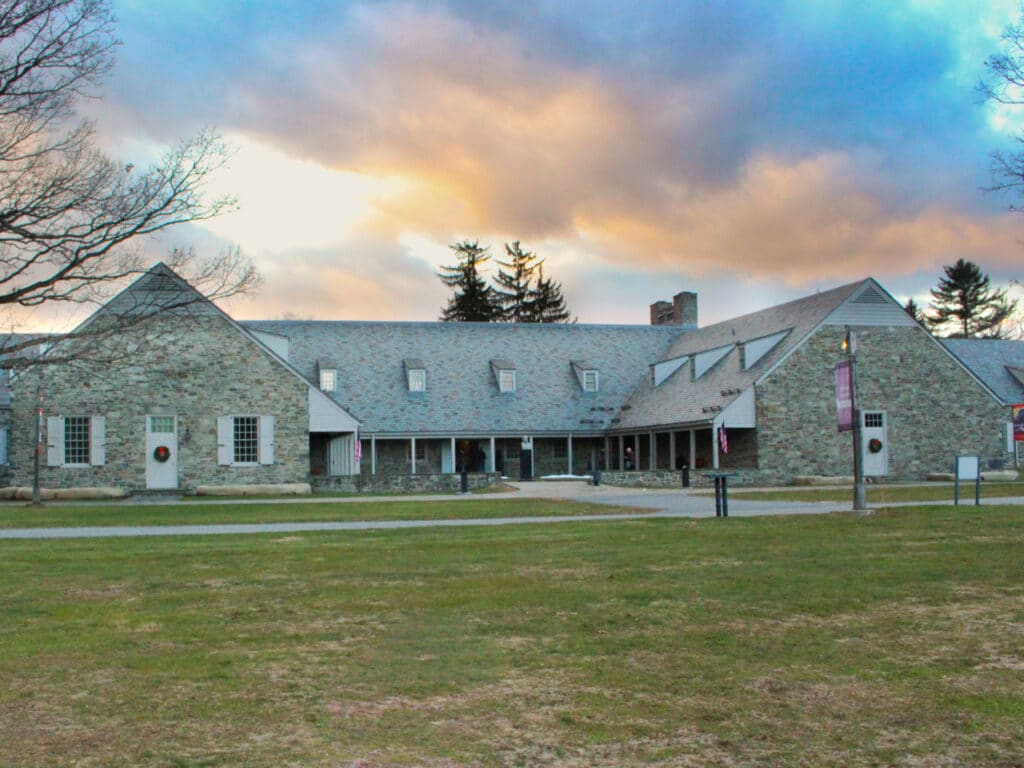
Both Springwood and Val-Kill are time capsules that draw visitors into the lives of Eleanor and Franklin, but the Franklin D. Roosevelt Presidential and Museum is the real gold mine of historical information.
Thousands and thousands of books, photos, and historical papers, plus many other artifacts from FDR’s presidency are on display, as well as items from his many collections of stamps, coins, and model ships.
Franklin D. Roosevelt ended Prohibition, steered the country through the Great Depression and World War II, initiated the New Deal, founded the March of Dimes, and served four terms as the country’s 32nd president.
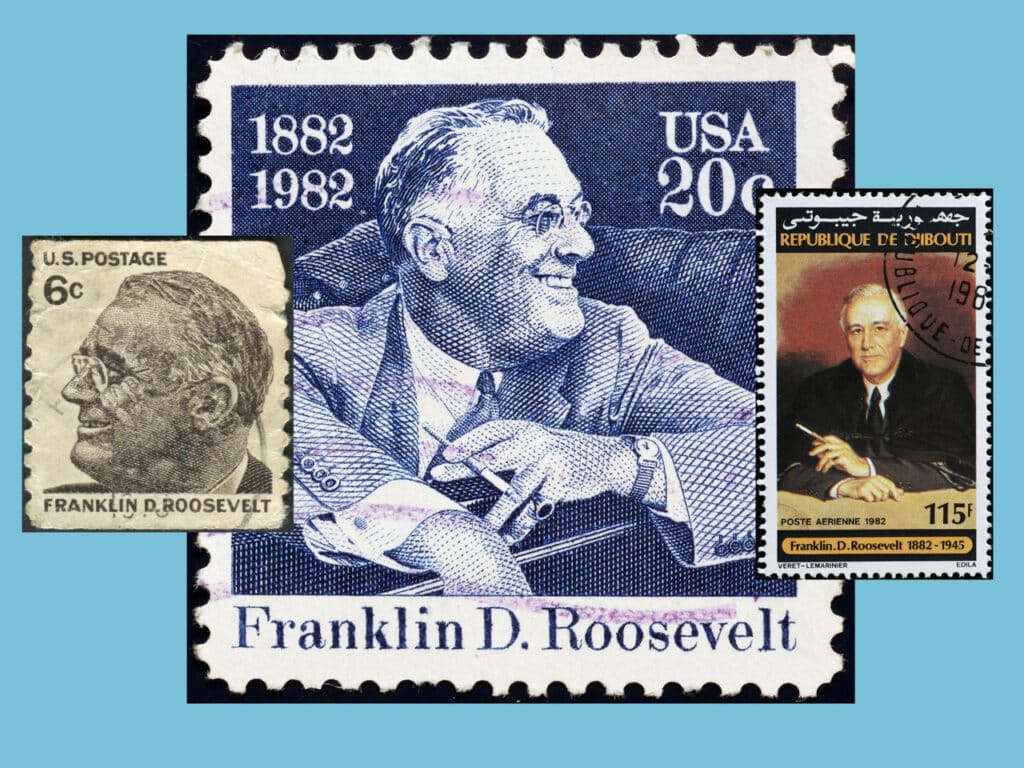
He also signed the Executive Order that resulted in 120,000 people of Japanese ancestry to be confined to World War II-era internment camps. As you can imagine, there’s information for days at his library, and not all of it puts FDR in the best light.
Also on display is the car he had outfitted with hand controls so he could drive, and his actual office where he worked even after the library opened to the public in 1941. You can also listen to recordings of his Fireside Chats, which he gave from this office and broadcast to the public via radio.
Roosevelt oversaw the building of his library and it opened on June 30, 1941 as the first presidential library in the United States.
Visiting FDR’s Childhood Home and Presidential Library
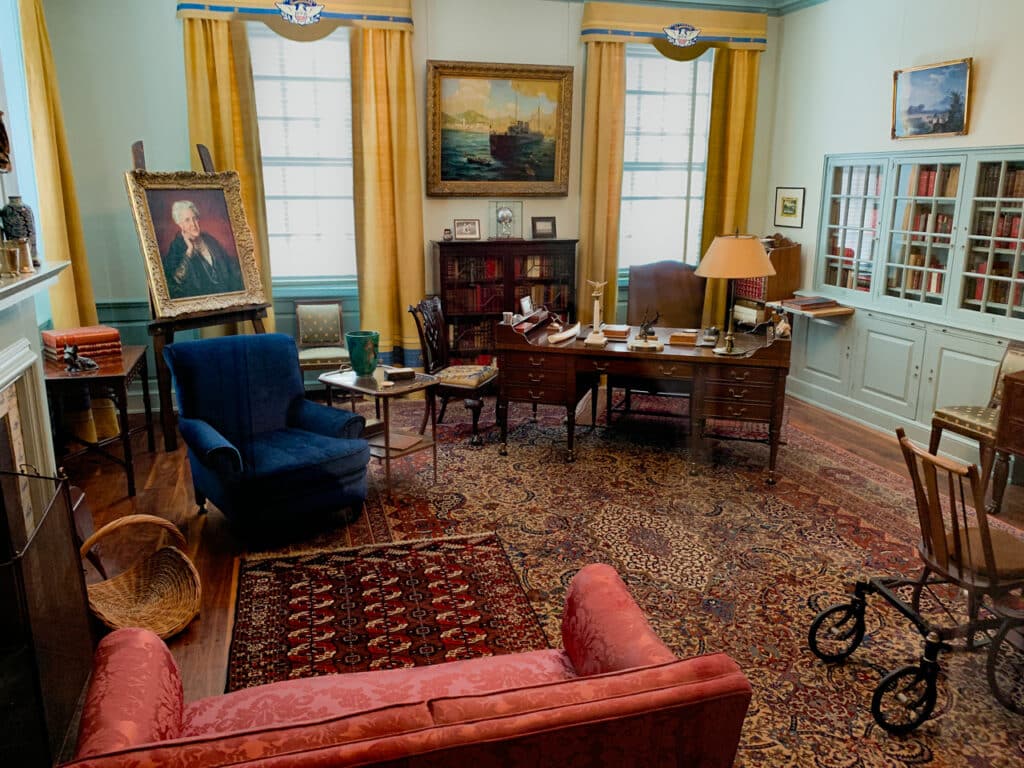
The only way to visit FDR’s childhood home is by joining a guided tour. See house tours calendar for current schedule of tours. Standard admission is $10 for anyone over 16 years old. Admission is FREE for those 15 and younger. Some days are fee-free.
Purchase tickets onsite at the Henry A. Wallace Visitor Center. There is also a bookstore, a small café, and a theater that shows an introductory film. Advance ticket purchase is only available for groups of 20 or more people.
Keep an eye on the calendar of events, especially during the Christmas season when the homes are decked out for the holidays.
FDR’s Presidential Library and Museum may be visited via self-guided tours. Admission is $10 (in addition to the admission to FDR’s home) and may be purchased online in advance. Some days are fee-free. The presidential library and museum is open 7 days a week, from 9 a.m.-5 p.m. (Nov.-Mar) and 9 a.m.-6 p.m. (Apr-Oct).
To travel to FDR’s home by Metro-North and Amtrak: take the train to Poughkeepsie Station. Dutchess County Transit operates an hourly bus from the station to the Henry A. Wallace Visitor Center. If traveling by car, see driving directions.
Like this post? Pin and save for future reference!
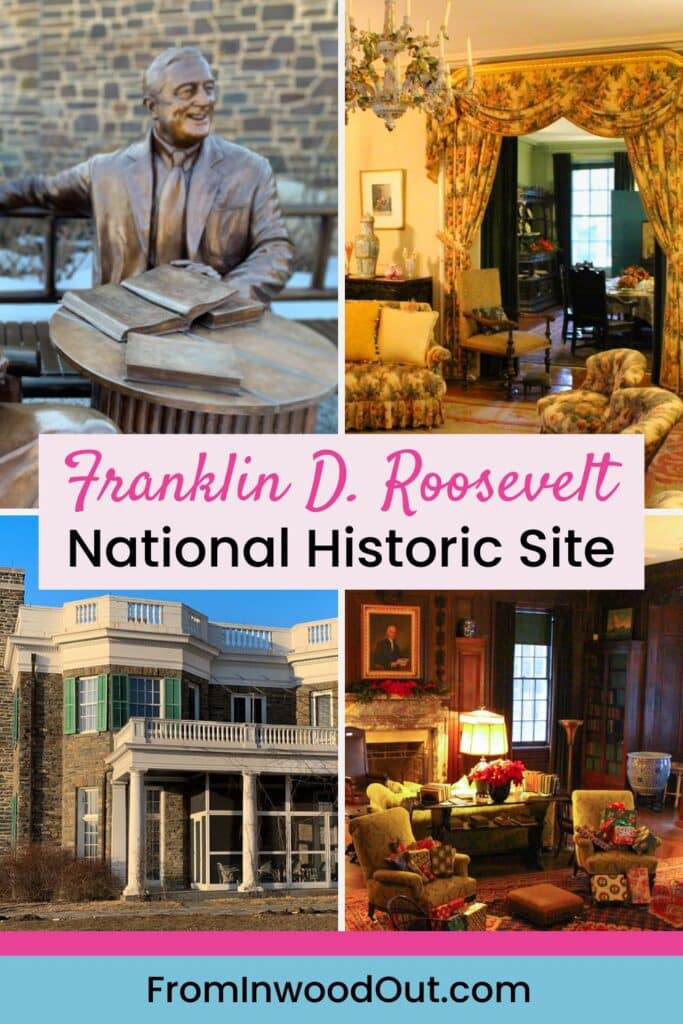
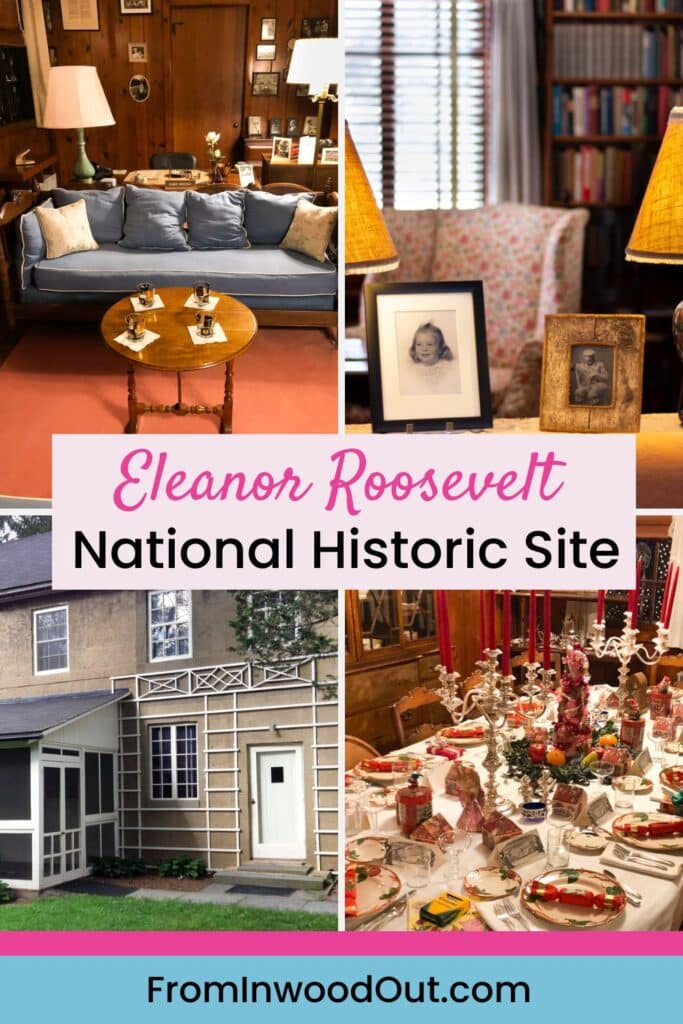
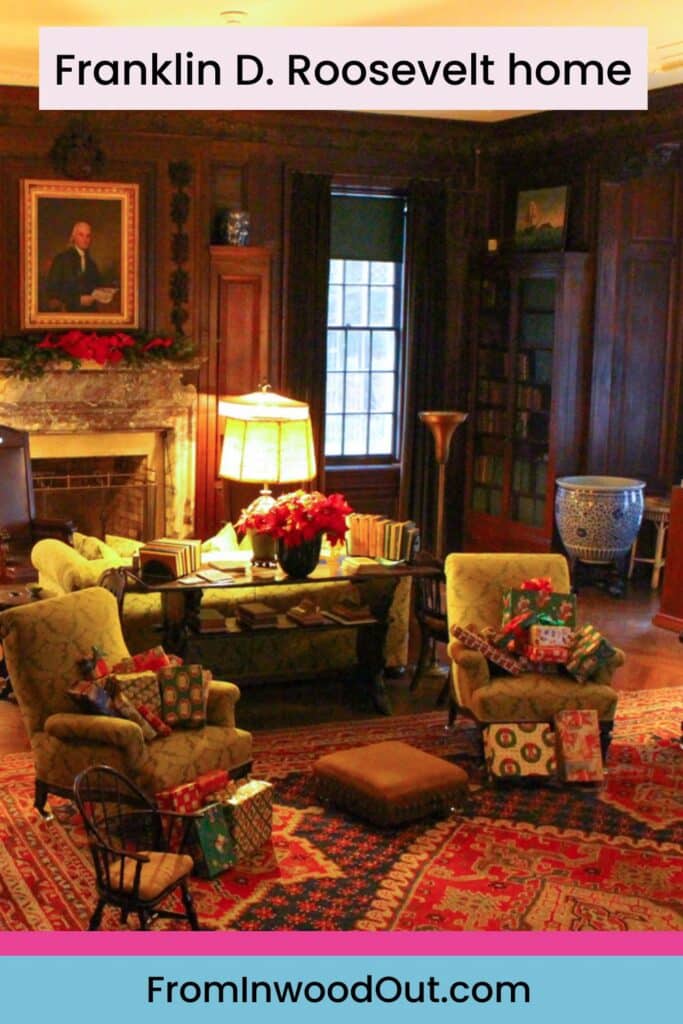
Eleanor Roosevelt National Historic Site
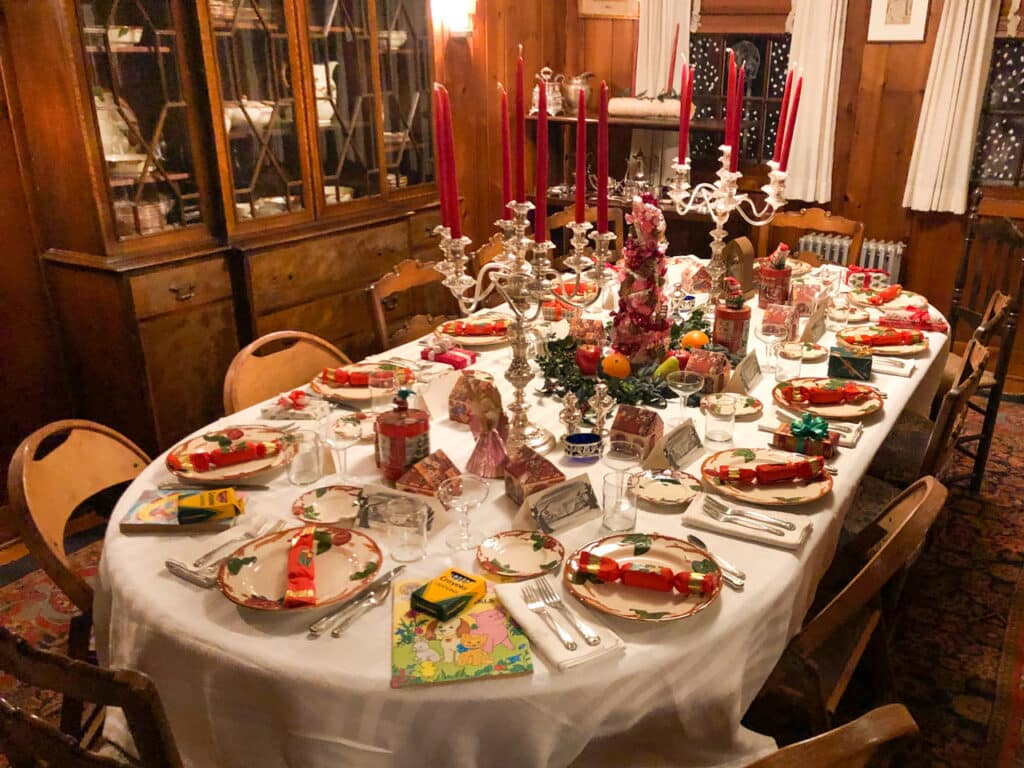
In her autobiography, Eleanor Roosevelt said she “took it for granted that men were superior creatures and knew more about politics than women did…” This was around 1912, when FDR was serving in the New York State Senate and expressed his support for women gaining the right to vote.
Eleanor supported women’s suffrage because Franklin did, or rather, she “realized that if my husband was a suffragist I probably must be, too…”
Even though I knew that a wealthy girl who was born into New York Society in 1884 like Eleanor would not have been encouraged to think for herself, I was still surprised to read this. I hadn’t been thinking of her as the debutante she was but only as the influential woman she went down in history as.
The Early Days of Val-Kill
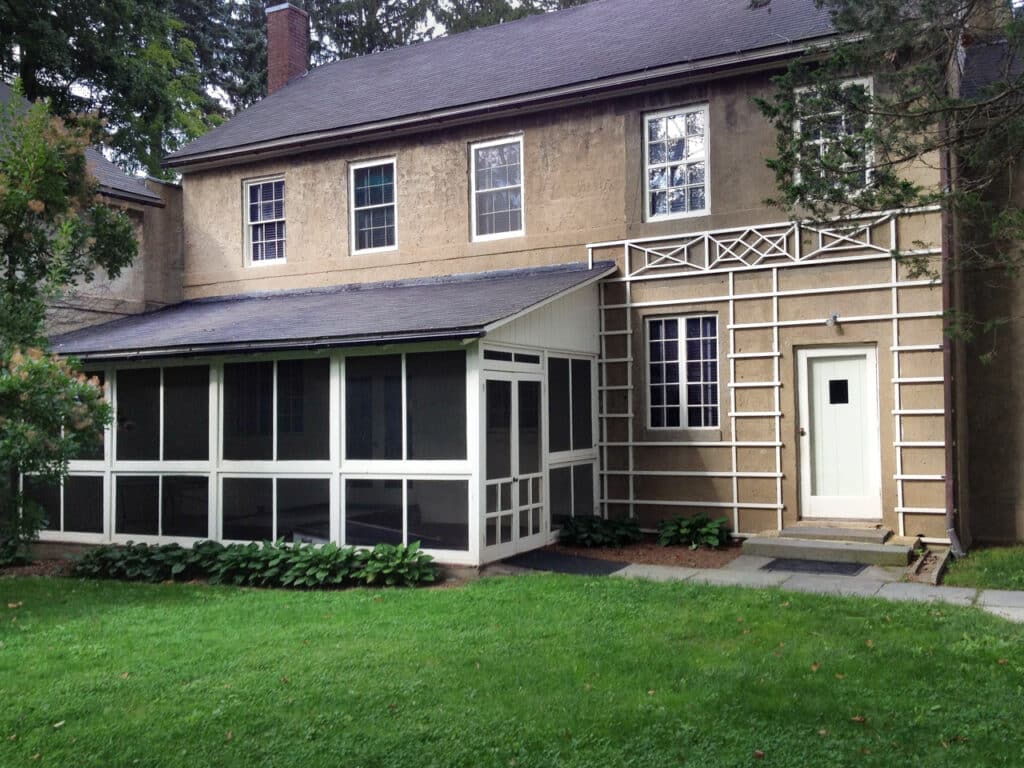
In an effort to keep her husband interested in politics after his polio diagnosis in 1921, Eleanor crossed paths with Marion Dickerman and her partner Nancy Cook. The two women were active in politics and women’s rights and they and Eleanor became fast friends. The three worked together with the Women’s Trade Union League, the League of Women Voters, and the Democratic National Committee.
They and Franklin often had picnics on a property that Franklin owned, located about three miles east of Springwood. It was located in the woods next to a stream called Fall Kill, which means “valley stream” in Dutch.
This was a favorite spot and the friends soon decided to make better use of it. They had a cottage and a workshop built and Nancy Cook put her skill at furniture-making to use. She was interested in reproducing, by hand, Early American furniture.
Franklin saw this as an opportunity for a social experiment. He wanted local farmers to learn skilled trades so that, during the seasons when their crops couldn’t support them, they’d have another way to earn money. This effort, which they’d named Val-Kill Industries, continued during the early years of the Great Depression and kept many local men gainfully employed.
How Val-Kill Became Eleanor’s Home Away from Home

A decade later, Val-Kill Industries closed. Franklin considered it a failure but it did plant the seeds for his New Deal program, which he put into place in 1933 when he became the president of the United States.
With the help of local laborers, Eleanor eventually turned the property into more of a home and family retreat. She provided an apartment for her personal secretary Malvina Thompson, and also got into the habit of retreating there when she needed a quiet place to work.
The Roosevelts spent summers at Springwood whenever they could but according to our tour guide there, Eleanor never really felt at home. The house very much belonged to Franklin’s mother Sara and it was where she doted on Franklin for his entire life.
Even when her grandchildren came along, Sara wanted control over their upbringing. Val-Kill provided Eleanor with a place of her own to retreat to.
When her husband died in 1945, Eleanor moved into Val-Kill permanently. Around the same time, she was appointed as a delegate to the United Nations, which kept her extremely busy. At Val-Kill, she hosted everyone from political associates and foreign diplomats to personal friends and family.
Visitors today can see the elaborate dining table she set for dinner parties, photos of family and friends, and the sofa where she sat with John F. Kennedy when he came seeking her support for the 1960 presidential election.

Val-Kill is also where Eleanor wrote many of her books, news articles, and “My Day” columns.
Visiting Eleanor Roosevelt National Historic Site
Val-Kill can be visited by guided tour only. Tickets must be purchased onsite at the Stone Cottage Visitor Center. Tour schedule changes seasonally. Advanced tickets are not available. Admission to Val-Kill is FREE.
Plan your travel to Val-Kill here.